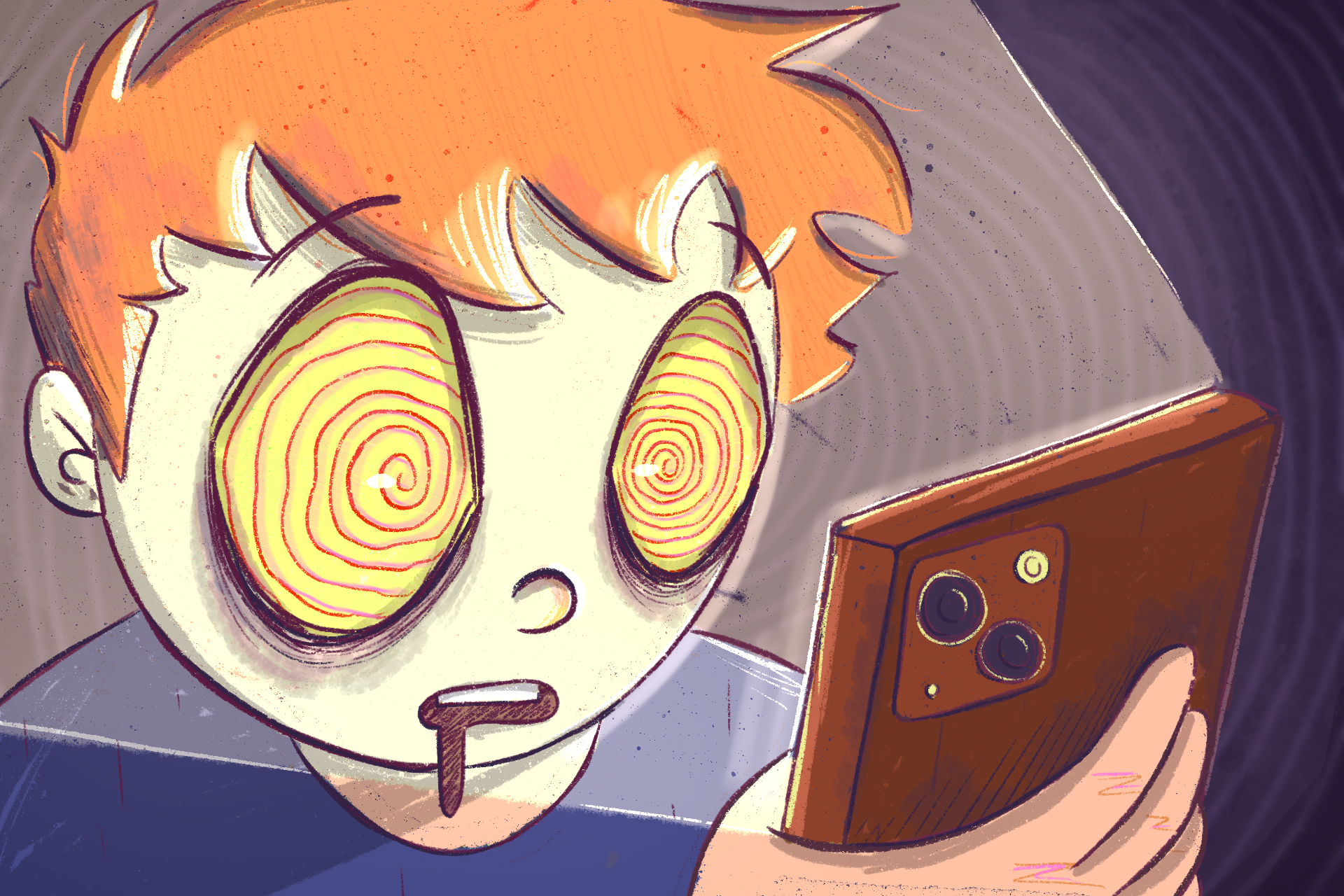Short-form content is manipulating the media as a whole.
Short-form content is snack-sized media for viewers to consume at their leisure. Convenient and casual to comb through, short-form content across Twitter posts, YouTube Shorts, Instagram Reels and of course TikTok have become the new chips and candy for the human brain.
Incredibly short and to the point, short-form content is an easy way to simply check up on what’s online during a snack break or between studying. From a quick recipe on Candy Grapes to a professional making sand castles at the beach, the hours pass by quicker in 30-second increments. In essence, though short-form content is meant to be easy and quick in consumption, it piles up and fills the day the same way chips fill someone up before dinner.
The ongoing search for some gratifying mental stimulation is known as doom-scrolling: the art of passing by content, spending hours searching for the next good video and the next piece of useless information. Like gambling, when people scroll online for hours, the anticipation of what is next is what keeps them locked in. When scrolling through TikTok, if a short video is engaging and aligns with a person’s interests, they keep searching for another video similar to that one. But even when the video is bad, viewers remain on the app hoping for the next “win” to finish off their scrolling.
In essence, short-form content, designed for easy access and convenience, has become one of the most hindering applications for the current generation. As much as a short about “8 ways to get Krispy Kreme donuts for FREE!” is harmless enough, it is the action of scrolling after that gets to their brains.In fact, doom-scrolling is well-known now for its impact on people’s ever-shortening attention spans.
Researching the psychological effects of short-form content on the brain, it is apparent that one of the most detrimental effects of scrolling is the reliance on superficial processing. The brevity and ease of consuming short-form content motivates continued use of it, as such complex ideas like news, politics or health advice are dumbed down in order to be expressed within 30 seconds. In other words, people are trained not to think when consuming content, as scrollers are not only fed information, but the opinion they should have on a subject.
Damaging as short-form content already is on people’s attention spans, the main issue arises when people lose their ability to develop their own opinions and thoughts on legitimate issues. In the current Information Age, people need to be aware of the media and information that they consume on a daily basis, as people are inundated with information on TikTok, on the news, on YouTube, on Google – there is rarely a point when people are not being fed information.
Superficial processing hinders people’s ability to utilize and digest information in different contexts. As much as watching “Brushing My Cat is SO Satisfying is at the end of the day harmless,” it is the endless scrolling that follows that can be damaging. Because short-form content is rapidly taking over the media landscape as a whole, news publishers are encouraged to join in on the publication of short-form pieces . In 2024, 73% of consumers use short-form videos for information, but 60% of short-form videos are watched for only 41% to 80% of their entirety.
And what might be so damaging about that?
Scrolling through short-form content, consumers are offered a variety of options and encouraged to pass the time with it. While it is important for younger viewers to learn about major news events, 30-second clips slipped in between cute animal videos and easy recipes is not entirely appropriate or accurately informative.
In reality, as convenient and as interesting short-form content can be, it only has so much purpose that it can play in spreading information. A short video can open a dialogue, introduce a subject to a viewer, lead a consumer into the greater story, but the short-form content itself cannot depict the entirety of a story. And apart from withholding the greater story to an audience, short-form encourages the brain to digest content superficially. When consuming hours of short-form content, the brain adapts to processing information at the most surface level. The human brain cannot really process and develop important information on the news the same way it can understand a shorter-form video. But the evolution of short-form content encourages such.
In essence, the limit of short-form content has doomed media as a whole.

















